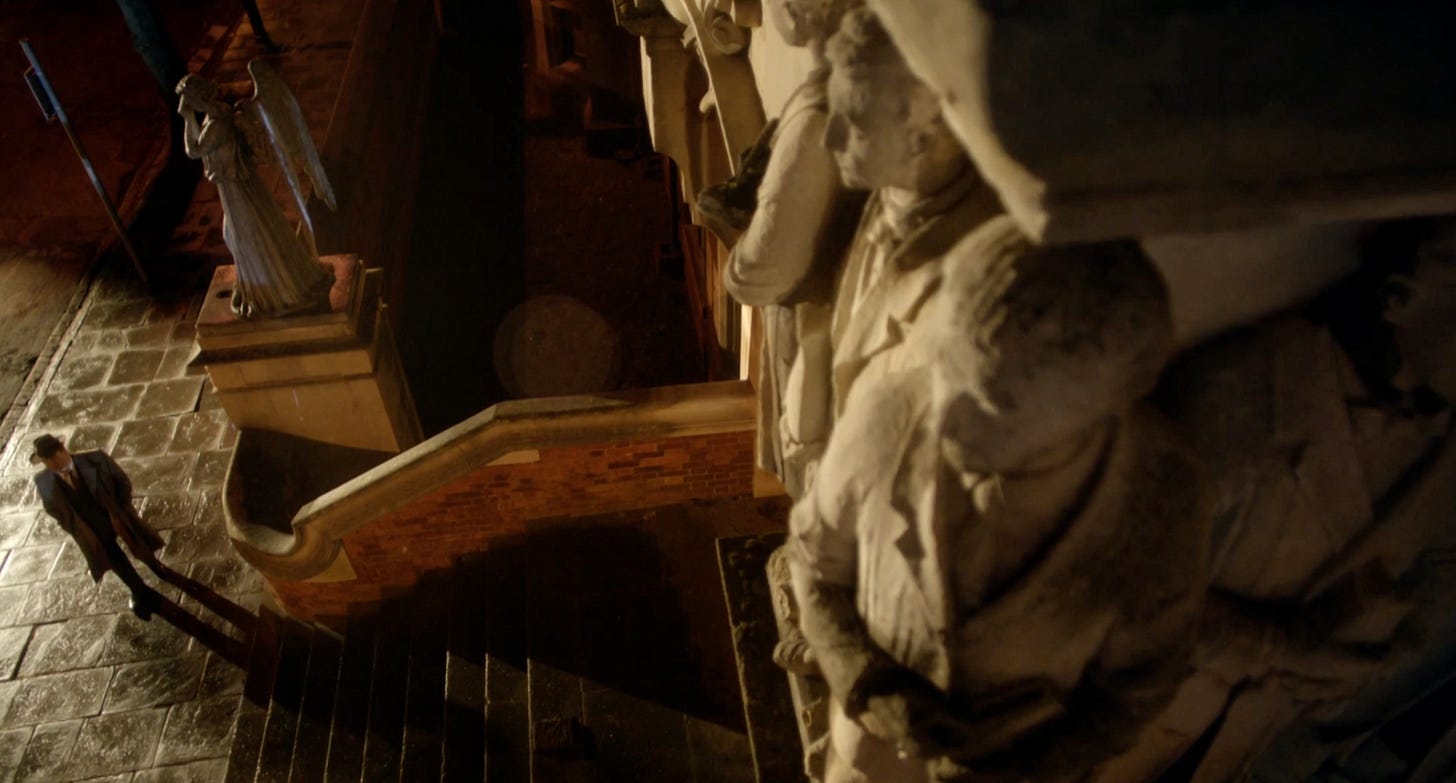Time Period, Genre, and Tone all at once: DOCTOR WHO
The opening of “The Angels Take Manhattan” needs to establish three important things: time period, genre, and tone. Now, Doctor Who changes some or all three of these elements in any given episode — sometimes you aren’t sure what genre or time period you’re in until well after the theme song, and sometimes these details are, well, less important than other times.
But for this story, it’s crucial the audience grasp all three, because “The Angels Take Manhattan” heavily relies on time periods (related to the Weeping Angels), genre (intrinsically tied to its multiple stories and pulp paperback), and tone (because of the ending, which we won’t spoil) for its plot and emotions to work.
So how does it quickly establish time period, genre, and tone? In short, the same way it calls back to the first appearance of the Angels: shots shots shots!
Genre and Time Period Shorthand
What’s more quintessential noir than a gumshoe narrating an investigation about conspiracy and corruption?
(Well, perhaps someone smoking and being misogynistic/homophobic/racist while making coffee and pulling a gun . . . but being Doctor Who, some things aren’t on the table.)
The voiceover makes clear Sam Garner is narrating himself. Along with his hat and coat, old-fashioned typewriter, and caged elevator, his voiceover signals we are at least several decades back from 2012, AKA when the episode aired, and the year Amy, Rory, the Doctor, and River are reading in the park as the episode opens.



Classical Look
If that wasn’t noir enough, just look at the shadows and ‘jail bar slats’ and contrast and beeyoutiful hallway shot once Sam gets inside!
Establishing Tone
With Doctor Who, part of establishing tone is establishing the location and villains you’re dealing with — an semi-abandoned military base in Antarctica is likely to have a different tone than a restaurant in the middle of London, and the Daleks are going to have a different vibe than the Master who is wildly different to the Sontarans.
Obviously “The Angels Take Manhattan” is quite the tip-off, but the opening scene takes care to shoot statues in a noir fashion, tying their existential, silent horror to its noir aesthetic and tone.
Even when noir ends well, its endings are not happy.
Putting the Angels in this setting telegraphs that while the mystery may be solved, it’s likely to involve tears; and indeed, this episode has a more heart-wrenching end than any in which the Angels made an appearance prior, all of which were also different genres and tones.
Takeaways
Though this is an episode deep into a long-running TV series, because Doctor Who plays with time travel, genres, and tones, “The Angels Take Manhattan” carefully establishes those boundaries in its first few minutes.
Thus, many of the ways it uses shots as shorthand can be applied to cold opens of features and shorts where the audience isn’t familiar with the world.






